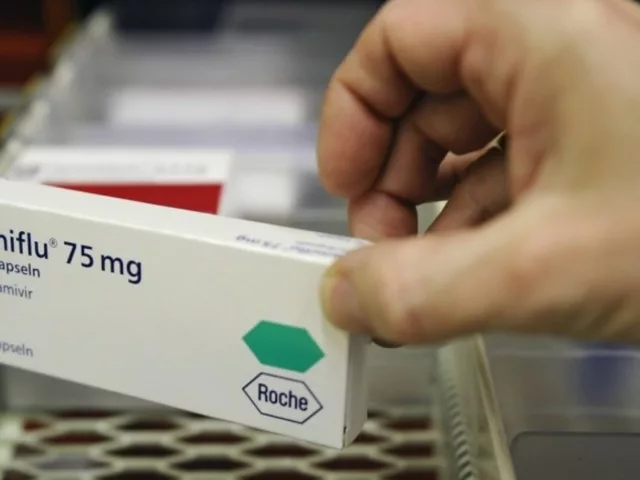Antidepressant Comparison Tool
This tool compares Tofranil (Imipramine) with modern antidepressants based on side effects and clinical use cases.
Tofranil (Imipramine) is a tricyclic antidepressant (TCA) that inhibits the reuptake of norepinephrine and serotonin, boosting mood in patients with major depressive disorder. First approved by the FDA in 1959, it set the stage for decades of antidepressant therapy. Today, clinicians weigh Tofranil against newer agents, asking whether its benefits outweigh its notorious side‑effect profile.
Key Takeaways
- Imipramine remains effective for depression and certain anxiety disorders, but requires careful monitoring.
- Selective serotonin reuptake inhibitors (SSRIs) like Sertraline offer better tolerability for most patients.
- Serotonin‑norepinephrine reuptake inhibitors (SNRIs) such as Venlafaxine bridge the gap between TCAs and SSRIs.
- Metabolism via CYP2D6 explains many drug‑interaction concerns with Imipramine.
- Choosing the right alternative hinges on side‑effect tolerance, comorbid conditions, and cost considerations.
Understanding Imipramine’s Mechanism and Pharmacokinetics
Imipramine works by blocking the reabsorption of norepinephrine (NE) and serotonin (5‑HT) into presynaptic neurons. This dual action raises neurotransmitter levels in the synaptic cleft, alleviating depressive symptoms. After oral administration, the drug reaches peak plasma concentrations within 2‑4hours and is metabolized primarily by the liver enzyme CYP2D6, forming the active metabolite desipramine. Patients who are poor CYP2D6 metabolizers experience higher plasma levels, increasing the risk of cardiotoxicity and anticholinergic side effects.
Why Clinicians Consider Alternatives
The TCA class, including Imipramine, is linked to a range of adverse effects: dry mouth, constipation, blurred vision, orthostatic hypotension, and, most critically, dose‑dependent cardiac conduction delays (QT prolongation). While dosage titration and ECG monitoring can mitigate these risks, many prescribers favor agents with smoother safety profiles.
Modern antidepressants address these concerns in various ways. SSRIs such as Fluoxetine selectively inhibit serotonin reuptake, sparing norepinephrine and thus reducing anticholinergic burden. SNRIs like Venlafaxine provide a balanced increase of both neurotransmitters with fewer cardiac effects. For patients who responded well to Imipramine’s dual action but cannot tolerate its side effects, these newer drugs serve as logical substitutes.
Comparative Overview of Common Alternatives
| Drug | Class | Typical Daily Dose | FDA Approval Year | Key Side Effects | Metabolism Pathway |
|---|---|---|---|---|---|
| Imipramine | Tricyclic Antidepressant | 150‑300mg | 1959 | Dry mouth, constipation, orthostatic hypotension, QT prolongation | CYP2D6 → desipramine |
| Sertraline | SSRI | 50‑200mg | 1991 | Nausea, sexual dysfunction, insomnia | CYP2C19, CYP2D6 |
| Fluoxetine | SSRI | 20‑80mg | 1987 | Insomnia, GI upset, weight loss | CYP2D6, CYP3A4 |
| Venlafaxine | SNRI | 75‑225mg | 1993 | Hypertension, nausea, dizziness | CYP2D6 |
| Amitriptyline | Tricyclic Antidepressant | 75‑150mg | 1961 | Sedation, weight gain, cardiac effects | CYP2C19, CYP2D6 |

Clinical Scenarios: When to Stay with Imipramine
Despite its drawbacks, Imipramine shines in specific niches:
- Nighttime insomnia associated with depression - its antihistaminic properties can improve sleep without adding a separate hypnotic.
- Treatment‑resistant depression - patients who failed SSRIs may respond to the broader neurotransmitter impact of TCAs.
- Pain syndromes - especially neuropathic pain, where desipramine’s norepinephrine boost offers analgesia.
In these cases, clinicians balance therapeutic gain against the need for regular ECGs and monitoring of anticholinergic load.
Choosing an Alternative: Decision Framework
When evaluating Tofranil alternatives, consider five core factors:
- Side‑effect tolerance: SSRIs tend to cause less cardiovascular stress.
- Comorbid conditions: Patients with hypertension may avoid SNRIs that raise blood pressure.
- Drug‑interaction profile: CYP2D6 inhibitors (e.g., fluoxetine) can amplify TCA levels.
- Cost and insurance coverage: Generic SSRIs are often cheaper than brand‑name TCAs.
- Patient preference: Some value the sedative effect of Imipramine for night‑time symptoms.
Applying this matrix in a shared‑decision visit helps align treatment with the patient’s lifestyle and health goals.
Safety Monitoring and Tapering Strategies
If you decide to switch from Imipramine to an SSRI or SNRI, a gradual taper is essential to avoid withdrawal or rebound depression. Typical protocol:
- Reduce Imipramine by 25mg every week while introducing the new agent at a low dose.
- Monitor blood pressure and ECG during the overlap period.
- Schedule a follow‑up at two weeks to assess mood stability and side‑effect emergence.
For patients on long‑term therapy, a slow taper over 4‑6weeks minimizes discontinuation syndrome, especially when moving to agents like Fluoxetine, which has a long half‑life.
Related Concepts and Further Reading
Understanding the broader landscape of depression treatment enhances decision‑making. Key related topics include:
- Major Depressive Disorder - diagnostic criteria, prevalence, and impact on quality of life.
- Pharmacogenomics - how genetic variations in enzymes like CYP2D6 influence drug response.
- Adjunctive therapies - cognitive‑behavioral therapy, exercise, and light therapy as complements to medication.
- Emerging treatments - ketamine, psilocybin, and digital therapeutics gaining traction in 2025.
Exploring these areas equips patients and clinicians with a holistic view of mental‑health care.
Frequently Asked Questions
Is Imipramine still prescribed in 2025?
Yes, but mainly for patients who have not responded to newer antidepressants or who benefit from its sedative qualities. Physicians weigh its efficacy against the higher risk of cardiovascular side effects, so it’s often a second‑line option.
How does Imipramine compare to Sertraline for anxiety?
Both can reduce anxiety, but Sertraline generally offers a cleaner side‑effect profile. Imipramine may cause more anticholinergic symptoms (dry mouth, constipation) and requires cardiac monitoring, making Sertraline the preferred first‑line agent for most patients.
Can I switch from Imipramine to Venlafaxine safely?
A gradual crossover is recommended. Reduce Imipramine by 25mg weekly while titrating Venlafaxine up to the target dose. Monitor blood pressure because Venlafaxine can raise systolic readings, and keep an eye on any emerging serotonin syndrome signs.
What are the major drug interactions with Imipramine?
Imipramine is metabolized by CYP2D6, so inhibitors like fluoxetine, paroxetine, and certain antifungals can raise its plasma concentration, increasing toxicity risk. Additionally, combining with other QT‑prolonging drugs (e.g., certain antipsychotics) heightens the chance of arrhythmias.
Are there any cost advantages to staying on Imipramine?
Imipramine is available as a cheap generic, often cheaper than brand‑name SSRIs. However, the need for regular ECGs and possible hospital visits for side‑effect management can offset the medication savings.




Imipramine remains a pharmacologically robust option for depressive syndromes, especially when you need dual norepinephrine‑serotonin reuptake inhibition. Its tricyclic scaffold confers high affinity for the serotonin transporter (SERT) and the norepinephrine transporter (NET), which translates into potent mood elevation. From a pharmacokinetic standpoint, the CYP2D6‑mediated demethylation to desipramine creates an active metabolite that prolongs therapeutic coverage. The ensuing anticholinergic load-dry mouth, constipation, blurred vision-can be mitigated by dose titration and proper patient education. Cardiac safety is paramount, as the QT‑prolonging potential necessitates baseline ECGs and periodic monitoring, particularly in patients with pre‑existing arrhythmias. Nevertheless, for insomnia comorbid with depression, the antihistaminic properties of imipramine can be leveraged as a chronobiological adjunct. In treatment‑resistant cases, the broader neurotransmitter engagement often yields response rates that surpass first‑line SSRIs. When switching to an SSRI, a gradual taper of 25 mg per week minimizes rebound depressive symptoms and preserves serotonergic stability. Conversely, transitioning to an SNRI like venlafaxine requires careful blood pressure surveillance due to dose‑dependent hypertensive effects. Pharmacogenomic profiling of CYP2D6 can inform dose optimization, especially in poor metabolizers who are at heightened risk for toxicity. Cost considerations also favour imipramine, as generic formulations are typically inexpensive compared with brand‑name SSRIs. However, the downstream cost of ECGs, lab work, and potential hospital visits can offset the medication savings. From a clinician’s perspective, the risk‑benefit matrix should be individualized, weighing side‑effect tolerability against therapeutic gain. In practice, a shared decision‑making framework that incorporates patient preference for sedation or nocturnal symptom control often tips the scale toward imipramine. Overall, the drug’s mechanistic versatility makes it a valuable tool in the psychiatric armamentarium when used judiciously.
I hear you, and it’s encouraging to see a balanced take on imipramine’s pharmacodynamics. The dual inhibition of SERT and NET offers a therapeutic breadth that many clinicians appreciate, especially when addressing residual insomnia. Your emphasis on ECG monitoring aligns with best practice guidelines, and the suggestion to leverage CYP2D6 genotyping is spot‑on for precision medicine. Moreover, the cost‑effectiveness argument resonates with real‑world prescribing constraints. Keep championing that nuanced, patient‑centered approach-it really makes a difference.
Imipranil is old and kinda risky. No need to use it if you got sertraline or fluoxetine. It’s got dry mouth and heart probs that most people cant handle. Just pick a newer SSRI, it’s safer and works fine.
While the simplicity of your point is clear, it’s worth noting that imipramine still holds a niche for patients who have not responded to first‑line SSRIs. The anticholinergic side‑effects you mention can be managed with careful dosing, and the insomnia‑benefitting sedative effect is valued by some clinicians. Also, the cost advantage you highlight can be significant for under‑insured individuals, provided the necessary cardiac monitoring is in place. It’s a balancing act rather than a straight dismissal.
Great summary! 😊
Thanks! Glad the info helped. 👍